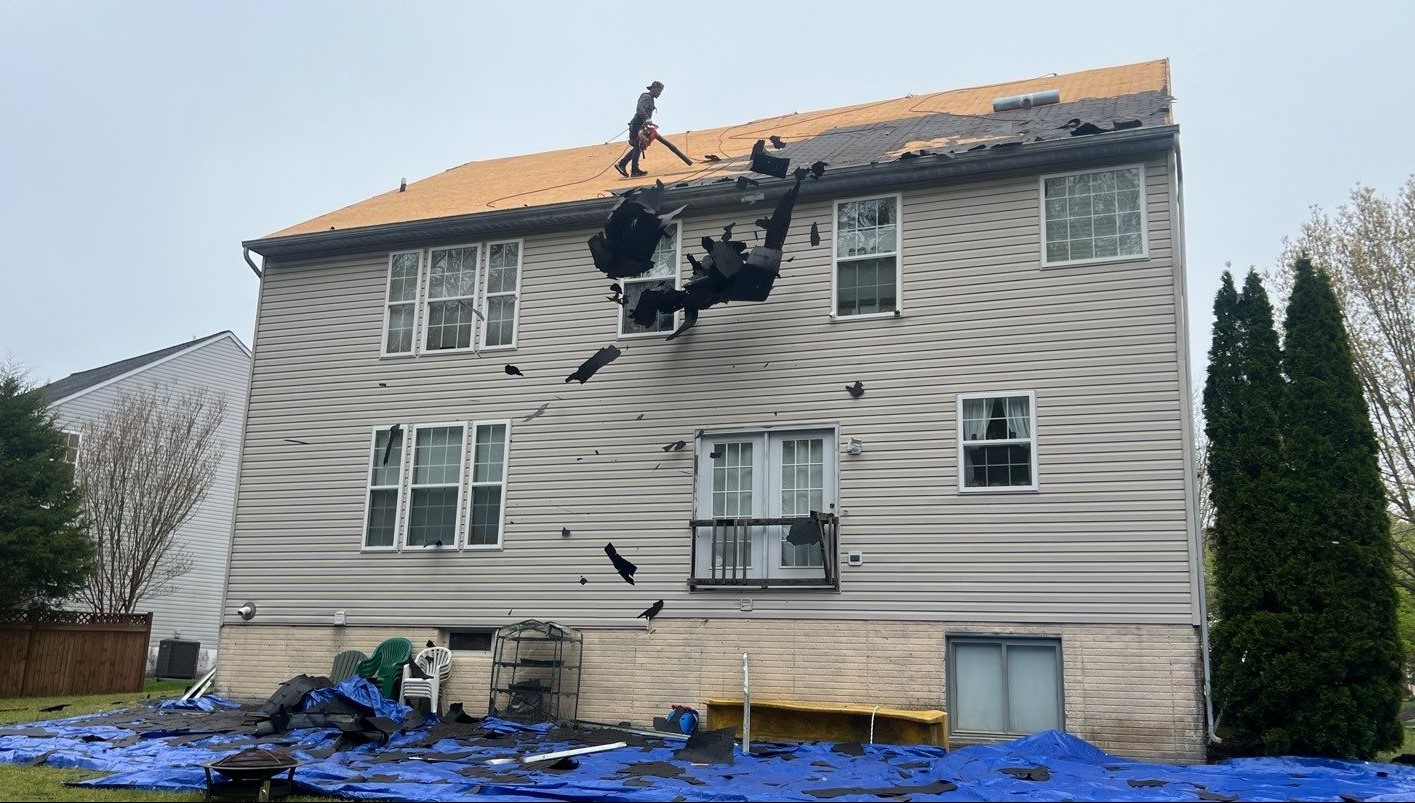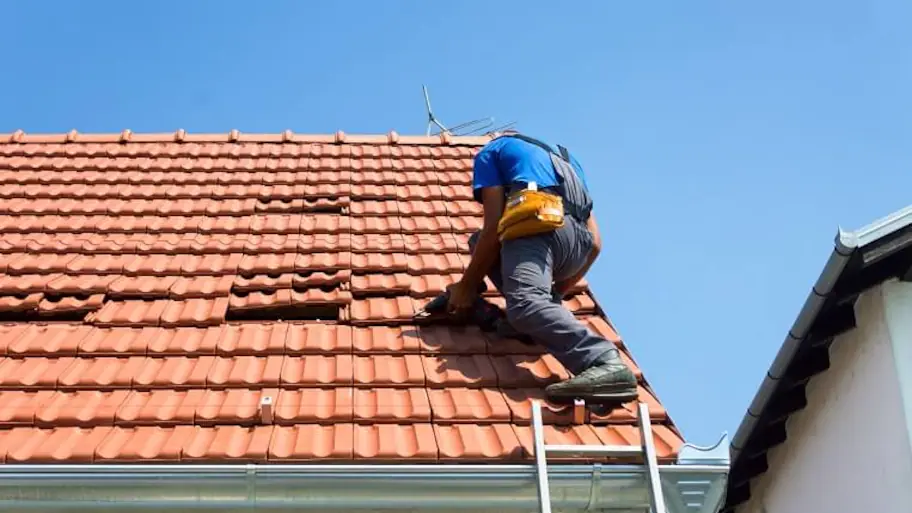Oahu Roofing: Dependable Roofing Solutions for Houses and Services
Oahu Roofing: Dependable Roofing Solutions for Houses and Services
Blog Article
Comprehending the Various Types of Roof Coverings: A Comprehensive Overview for Homeowners
With a variety of choices-- varying from the conventional gable to the modern flat-- each type presents one-of-a-kind benefits and obstacles that must align with the homeowner's environmental considerations and particular demands. As we explore the ins and outs of various roof types, it ends up being noticeable that one dimension does not fit all; the right selection might amaze you.
Gable Roofings
Gable roofs, identified by their triangular shape, are among the most popular roof styles as a result of their simplicity and performance in shedding water and snow. This style features 2 sloping sides that satisfy at a ridge, permitting for effective water drainage and reducing the risk of water accumulation. The steep pitch generally related to gable roof coverings improves their capacity to handle heavy rainfall, making them appropriate for numerous climates.
Along with their sensible benefits, gable roofing systems supply aesthetic adaptability. They can be adjusted to various architectural designs, from typical to modern homes. The design can likewise suit added attributes such as dormer home windows, which boost all-natural light and air flow in the attic space.
In addition, saddleback roofs give sufficient area for insulation, contributing to power efficiency. House owners can pick from a selection of roofing materials, consisting of asphalt tiles, metal, and floor tiles, better improving customization choices.
In spite of their benefits, gable roofing systems may need additional assistance in locations susceptible to high winds or hefty snowfall. In general, the gable roofing system remains a favored option because of its blend of functionality, durability, and aesthetic appeal.
Flat Roofs
Flat roofing systems are frequently acknowledged for their minimal layout and practical applications, specifically in industrial and industrial settings (oahu roofing). These roof coverings feature a horizontal or almost horizontal surface area, which permits very easy building and construction and versatile room usage. While they may do not have the aesthetic appeal of pitched roofing systems, flat roof coverings provide various advantages, particularly in metropolitan atmospheres where making best use of room is crucial
Among the primary advantages of level roofing systems is their ease of access. House owners can utilize the roofing space for numerous purposes, such as roof yards, terraces, or photovoltaic panel setups. Additionally, flat roof coverings are generally much more cost-effective to maintain and mount contrasted to their sloped counterparts, as they need less materials and labor.
Nevertheless, level roof coverings do present specific difficulties. Proper water drainage is important to protect against water pooling, which can lead to leaks and architectural damages. Thus, picking top notch waterproofing materials and routine inspections are essential for making sure long life. Common materials made use of for level roof coverings include built-up roof (BUR), modified bitumen, and single-ply membrane layers, each offering unique advantages. Overall, flat roofing systems work as a adaptable and practical option for numerous house owners and businesses alike.
Hip Roof Coverings
Hip roofs are identified by their sloped sides that converge on top, creating a ridge. This design is unique from gable roofs, as all 4 sides of a hip roof incline downwards toward the wall surfaces, giving a more stable structure. The angle of the slopes can differ, allowing for adaptability in building aesthetic appeals and capability.
Among the primary advantages of hip roofs is their ability to hold up against hefty winds and damaging climate condition. The sloped surfaces enable better water drainage, reducing the threat of leakages and water damage. Furthermore, hip roofs provide increased attic room area, which can be utilized for storage space and even exchanged livable areas.
However, creating a hip roof covering can be extra complicated and expensive than simpler roofing system kinds, such as gable roofings. The extra material and labor entailed in producing the slopes and making certain proper structural honesty can bring about greater expenditures. Despite these drawbacks, several house owners favor hip roofings for their resilience, visual allure, and potential for power efficiency.
Mansard Roofing Systems
Mansard roof coverings, often identified by their unique four-sided style, attribute two slopes on each side, with the lower slope being steeper than the top. This building design, originating from France in the 17th century, is not just visually enticing yet functional, as it makes the most of the functional room in the upper floors of a structure. The high reduced slope enables more headroom, making it a suitable selection for lofts or attics, which can be converted into living areas.
Mansard roofings are characterized by their versatility, accommodating different architectural styles, from standard to contemporary. They can be built with different materials, including asphalt shingles, slate, or metal, offering house owners with an array of alternatives to match their preferences and spending plans. In addition, the layout enables the integration of dormer home windows, boosting all-natural light and air flow in the top levels.
Nevertheless, it is important to consider the prospective downsides. Mansard roofing systems might need even more upkeep as a result of the intricacy of their design, and their steep inclines can be challenging for snow and rain drainage. On the whole, mansard roofings combine elegance with practicality, making them a preferred selection amongst homeowners seeking distinctive architectural attributes.
Dropped Roofs
As homeowners significantly look for simplicity and capability in their building designs, shed roof coverings have become a preferred option. Identified by a single sloping aircraft, a shed roofing presents a minimalist aesthetic that complements numerous home styles, from modern to rustic.
Among the primary advantages of a shed roof covering is its straightforward building, which usually equates to decrease labor and material expenses. This layout permits reliable water drainage, minimizing the threat of leaks and water damage. In addition, the vertical incline supplies ample area for skylights, boosting natural light within the interior.
Dropped roof coverings also supply adaptability in regards to use. They can be efficiently incorporated right into enhancements, garages, or outdoor structures like structures and sheds. In addition, this roof style can fit numerous roof covering products, consisting of metal, asphalt tiles, or perhaps eco-friendly roofings, straightening with eco-friendly efforts.
Nonetheless, it is vital to consider regional climate conditions, find out here as hefty snow lots might demand changes to the roof covering's angle or framework. Overall, shed roofing systems present a useful and aesthetically pleasing option for homeowners wanting to make best use of capability without jeopardizing style.
Conclusion


Gable roofing systems, characterized by their triangular form, are amongst the most prominent roofing designs due to their simpleness and performance in dropping water and snow. oahu roofing. The high pitch commonly associated with gable roofings improves their capacity to handle heavy rainfall, making them ideal for various climates
While they might do not have the aesthetic appeal of pitched roofings, level roof coverings use countless advantages, especially in metropolitan atmospheres where making the most of area is crucial.

Report this page